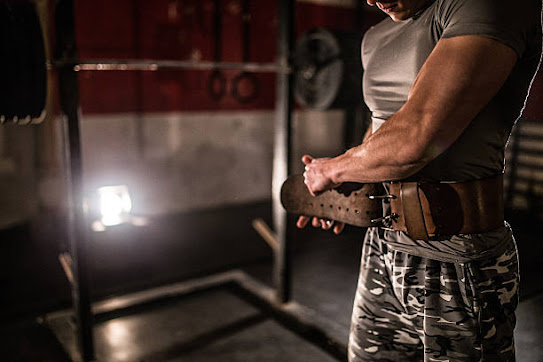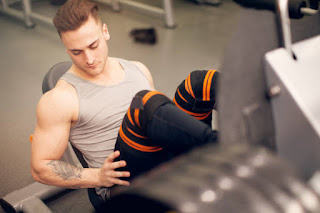Unveiling the Weight Lifting Belt Benefits
Weight lifting belts have become common in gyms, but do you know why they are so popular among weightlifters and fitness enthusiasts? In this blog post, we will explore the advantages and disadvantages of using weight lifting belts and shed light on their purpose. We will address common questions regarding when and at what weight to use a belt for deadlifts and squats. Additionally, we will discuss the role of weight lifting belts in preventing lower back pain and the benefits of squatting without a belt. Let's dive into the world of weight lifting belts and discover how they can enhance your performance and protect your back.
Advantages and Disadvantages of Using Weight Lifting Belts
Weight lifting belts offer several advantages that can enhance your lifting experience:
Core Stability: Belts support your core muscles, promoting stability and reducing the risk of injury during heavy lifts.
Increased Intra-abdominal Pressure: By wearing a belt, you can increase intra-abdominal pressure, which supports the spine and creates a stable foundation for lifting movements.
Mind-Muscle Connection: Belts can help you focus on engaging the target muscles, as you feel secure and confident in your lifting form.
However, it's important to be aware of the potential disadvantages:
Overreliance on Belts: Relying too heavily on a belt can hinder the development of core strength and stability, which are crucial for functional movement.
False Sense of Security: Wearing a belt may lead to a false sense of invincibility, causing individuals to attempt weights beyond their capabilities and increasing the risk of injury.
Dependency: Becoming dependent on a belt can limit your ability to perform exercises without it, potentially hindering overall progress.
The Purpose of a Weight-Lifting Belt
The primary purpose of a weight lifting belt is to provide support and stability to the core and lower back during heavy lifts. When you engage in exercises like deadlifts and squats, a weight lifting belt helps maintain proper spinal alignment, reduces stress on the lower back, and enhances overall lifting performance. It acts as an external support system for the core muscles, allowing you to safely generate more force and lift heavier weights.
At What Weight Should I Use a Belt for Deadlifts and Squats?
The decision to use a weight lifting belt for deadlifts and squats depends on various factors, including your experience, strength level, and personal preference. As a general guideline, it is recommended to consider using a belt when lifting around 80% or more of your one-repetition maximum (1RM). This is typically the point at which the loads become more demanding and may put additional stress on the lower back.
However, it's important to note that this recommendation can vary from person to person. Some individuals may benefit from using a belt earlier in their lifting journey, while others may choose to delay its use until they reach higher weights. It's very important to listen to your body, gradually introduce the belt when necessary, and seek guidance from a qualified trainer or coach to figure out the best approach for your specific needs.
Do Weight Lifting Belts Help Lower Back Pain?
Weight-lifting belts can provide relief from lower back pain for certain individuals. When worn correctly, a belt can help stabilize the spine and reduce stress on the lower back during lifting movements. It increases intra-abdominal pressure, which supports the core and helps distribute the load more effectively.
However, it's important to note that weight-lifting belts do not cure lower back pain. If you're experiencing chronic or severe pain, it is essential to consult a healthcare professional or a qualified physical therapist for a proper diagnosis and personalized treatment plan. Addressing underlying issues, improving lifting technique, incorporating exercises that strengthen the core and back muscles, and practicing proper form can also significantly manage and prevent lower back pain.
Is a Weight Belt for Squats Good?
Weight lifting belts can benefit squats, especially when performing heavy loads. Squats place significant stress on the lower back and core, and a weight lifting belt can help stabilize the spine and provide additional support. It promotes proper form, allowing you to maintain an upright torso and prevent excessive back rounding.
However, it's important to note that while a weight belt can enhance your performance and safety during squats, it should not replace proper technique, mobility work, and core strengthening exercises. A balanced approach that combines a weight lifting belt with a focus on building core strength and maintaining proper form is ideal for maximizing the benefits of squats.
When to Start Using a Lifting Belt?
The decision of when to start using a lifting belt depends on several factors, including your lifting experience, strength level, and specific goals. As a general recommendation, it is best to first focus on developing a solid foundation of core strength, stability, and proper lifting technique before incorporating a weight lifting belt. This allows your body to naturally adapt and strengthen the core muscles required for stability during heavy lifts.
Once you have established a strong core and developed proper lifting mechanics, you can consider introducing a weight lifting belt when lifting heavier loads or approaching your maximum strength levels. It's important to remember that a belt should complement your training, not compensate for weaknesses or poor form. Consulting with a qualified trainer or coach can help you figure out the right time to incorporate a lifting belt into your routine.
Benefits of Squatting Without a Belt
While weight lifting belts can provide support and stability during squats, there are benefits to squatting without a belt as well:
Core Strength Development: Squatting without a belt forces your core muscles to work harder to stabilize your spine and maintain proper form, increasing core strength and stability over time.
Improved Technique: Without the assistance of a belt, you may become more conscious of your form, focusing on maintaining an upright torso and engaging the proper muscle groups throughout the squat movement.
Functional Strength: Squatting without a belt mimics real-life movements that require core stability, such as lifting and carrying heavy objects. You can develop functional strength that translates into every day activities by training without a belt.
It's important to note that squatting without a belt should be approached gradually, emphasizing proper form, gradual progression, and listening to your body. Please consider incorporating periods of beltless squatting into your training routine to get these additional benefits.
Conclusion
Weight lifting belts can be valuable tools for enhancing performance and protecting the lower back during heavy lifts. They provide support, increase core stability, and allow for greater intra-abdominal pressure. However, using them wisely is important, considering individual factors and not becoming overly reliant on their use. Developing core strength, practicing proper form, and seeking professional guidance are key elements in utilizing weight-lifting belts effectively. Remember, the goal is to strike a balance between utilizing the benefits of a weight lifting belt and developing natural strength and stability to ensure long-term progress and injury prevention.

.jpg)


Comments
Post a Comment